Locksmithing & Security Technology Curriculum
Graduates of the Locksmithing & Security Technology program are trained to perform all basic locksmithing tasks with minimum supervision to satisfy customer demand and to meet standards set by the trade.
They understand how to service and repair all mechanical residential and commercial door-locking devices, set up a master key system, install locks, service automotive locks and open safes without knowing the combination. Graduates are familiar with electronic and mechanical access control systems.
You’ll learn locksmithing through a combination of classroom theory, lectures, demonstrations, and hands-on benchwork, surveying, and installation. Classes meet five days a week in the mornings, and after your second semester, you can work part-time while continuing to learn the trade in class.
Students set up and maintain adjustment of key duplicating machines to accurately cut keys.
- Key identification
- Key machine adjustment
- Key duplicating
Given various locks, students learn to fit keys by hand-filing and use various methods to open locks.
- Fitting keys by hand
- Bit keys
- Warded locks
- Lever locks
- Pin-tumbler locks
- Opening and servicing locks
- Use of picks
- Cylinder tolls, plugs, and followers
Given a code book and code-based key cutting machine, students select the proper key blank and accurately cut keys by code, learning to distinguish between false or irrelevant numbers and true code numbers.
- Description of codes
- Locating codes
- Use of code books and code machines
Students dismantle and re-assemble standard locking devices, learning to service and repair them as needed with consistent accuracy.
- Mortise locks
- Cylindrical locks
- Bit key locks
- Lock functions
- Lock finishes
- Backsets
Given a floor plan, students construct a master-key chart and master-key system that limits access to specific users.
- Safety factors
- Master keying
- Construction of master key chart
- Phantom keys
- Rules
- Computer generated systems
- Master key 75-100 cylinders of various keyways and cylinder types.
Students service and re-key Schlage wafer locks accurately and demonstrate the principals of operation of the Medeco high security cylinder as outlined in the Medeco Technical Service Manual. Other manufacturers covered: Sargent IC, Multi-Lock, Abloy, Kaba Peaks. Given various cylinders students service, re-key and master key them accurately.
- Theory of operation
- Basic pinning
- Master keying
The student will demonstrate the working principles of interchangeable core cylinders by master keying and servicing these cylinders with complete accuracy.
- Theory of operation
- Completion of pinning chart
- Cutting of interchangeable core keys
- Complete pinning chart correctly and master key 10-20 cores accurately.
The student will install and mortise deadbolts, cylindrical locksets, emergency exit devices and other locking mechanisms within class prescribed guidelines.
- Rim locks
- Jimmyproof
- Cylindrical
- Deadbolts
- Panic devices
- Detex alarm locks
- Metal doors-steel and aluminum
- Install 15-25 of the various listed locking devices properly.
Given common floor and wall safes, the student will open and service them, and change the combinations.
- Principle of operation
- Classification of safes and U.L. ratings
- Servicing of combination units of manipulation
- Changing the hand of key type units
- Construct combination chart
- Safe manipulation
- Change 10-20 safe combinations. Open 15-20 safes by the process shown in class.
- Alarm locks – principles and operation
- Access control including mechanical locks and electronic locks (battery powered and hard-wired)
- Installation
In common residential and commercial situations, the student will select and install auxiliary hardware for additional security.
- Metal doors
- Door closers including determining hand of door, determining proper closer size and installation of closers
- Cylinder guards
- Lock guards
- Flush bolts
- Install-a-lock
The student will demonstrate an understanding of requisites for operating a shop and keeping proper inventory control.
- Sources of supply (lecture and class discussion)
- Inventory and equipment control
- Equipping the shop and service vehicle
- Small business operation (small business seminar)
- Computer demonstration
The curriculum each year includes guest speakers who provide hands-on lectures and demonstrations, as well as occasional offsite field trips. Past speakers and trips have included:
- Proteck cylinders with Assa Abloy guest lecturers
- Allegion electronic access with Don Cherry
- Router safety and chisel sharpening
- Factory tours and Lock Museum of America in Connecticut
- Annual trip to Yankee Security Convention
Facilities
In our Locksmithing & Security Technology program, you’ll train in a one-of-a-kind learning environment. The facility includes individual benches for each student, a room for instruction/demonstration, an installation room, a resource library, and a brand new access control zone.
Our state-of-the-art facility is stocked with major and specialized equipment, hardware, and technology needed to advance your career:
- HPC Tiger Shark 2
- ILCO Futura
- ITL-9000
- Framon #2 Code Machine
- IC Core A2 Blue Punch Key Machine
- HPC/Scotsman Duplicode
- Automatic Duplicator
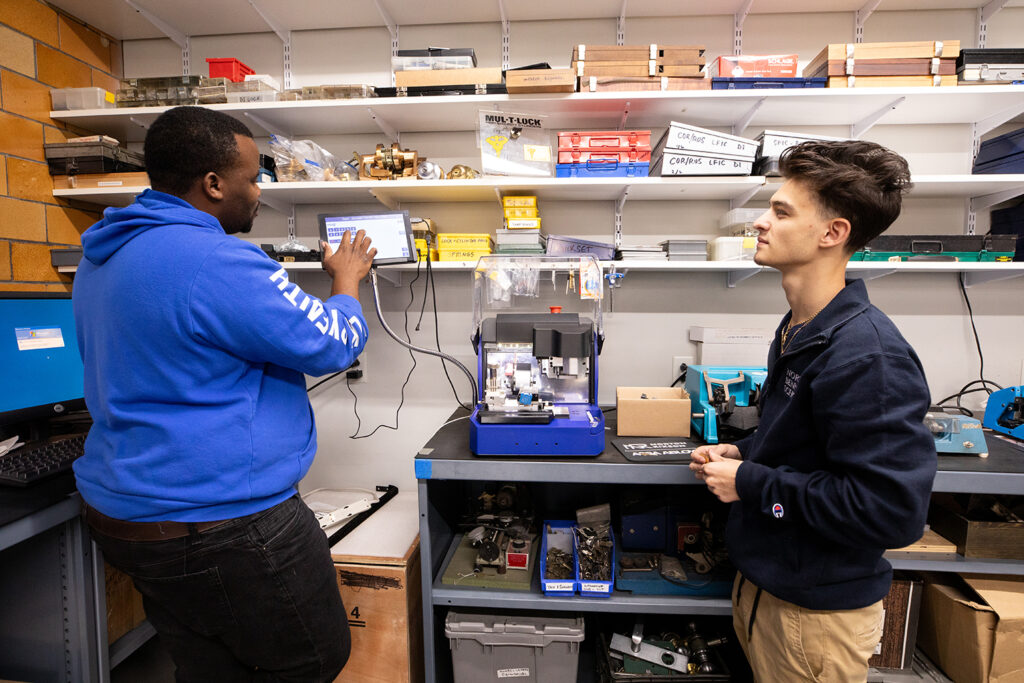
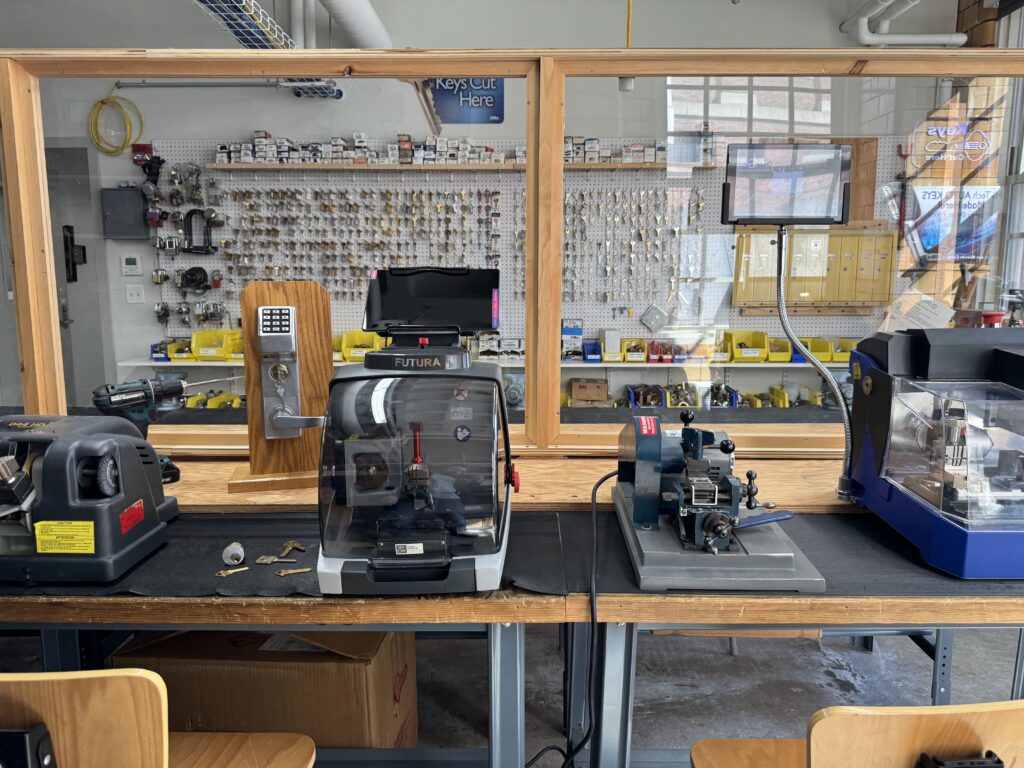
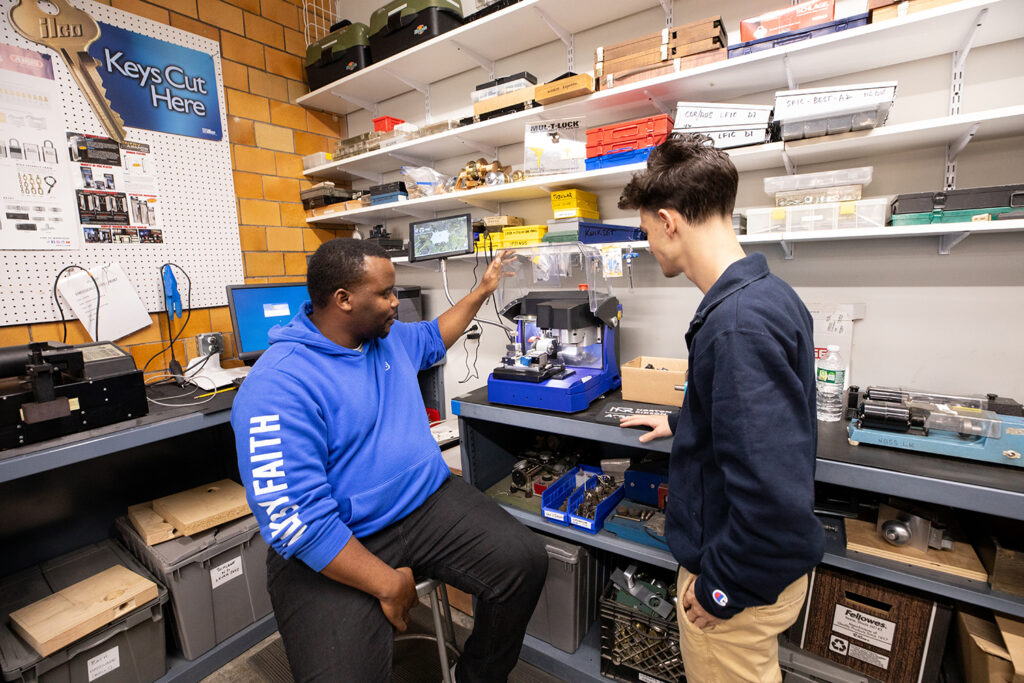
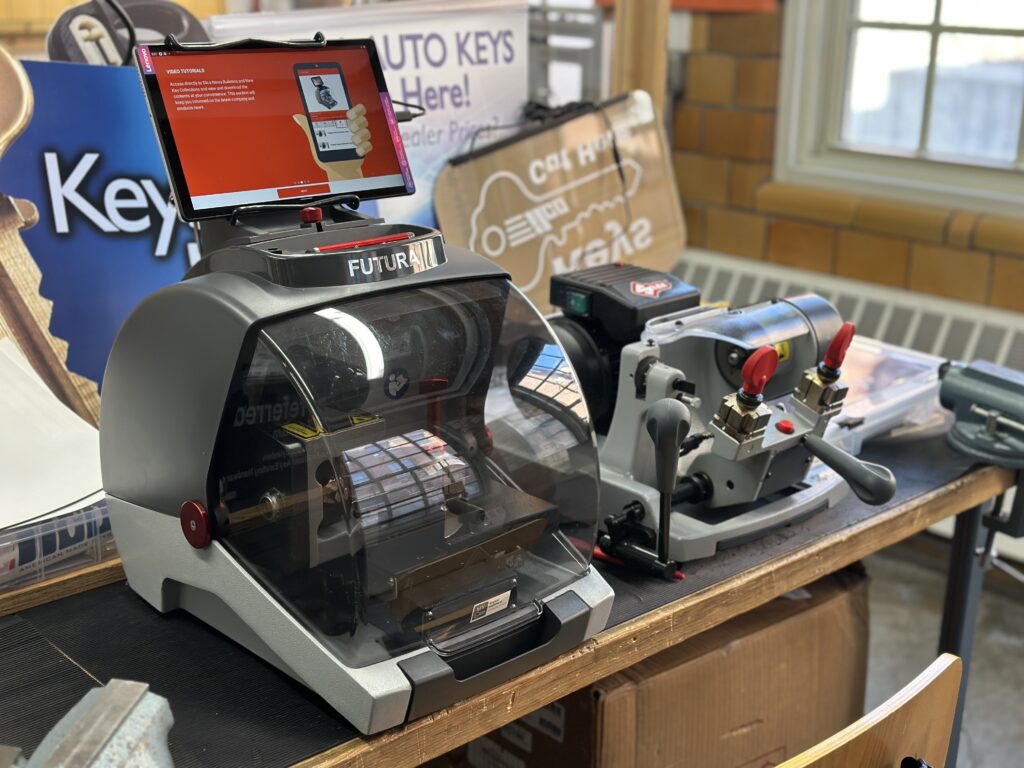
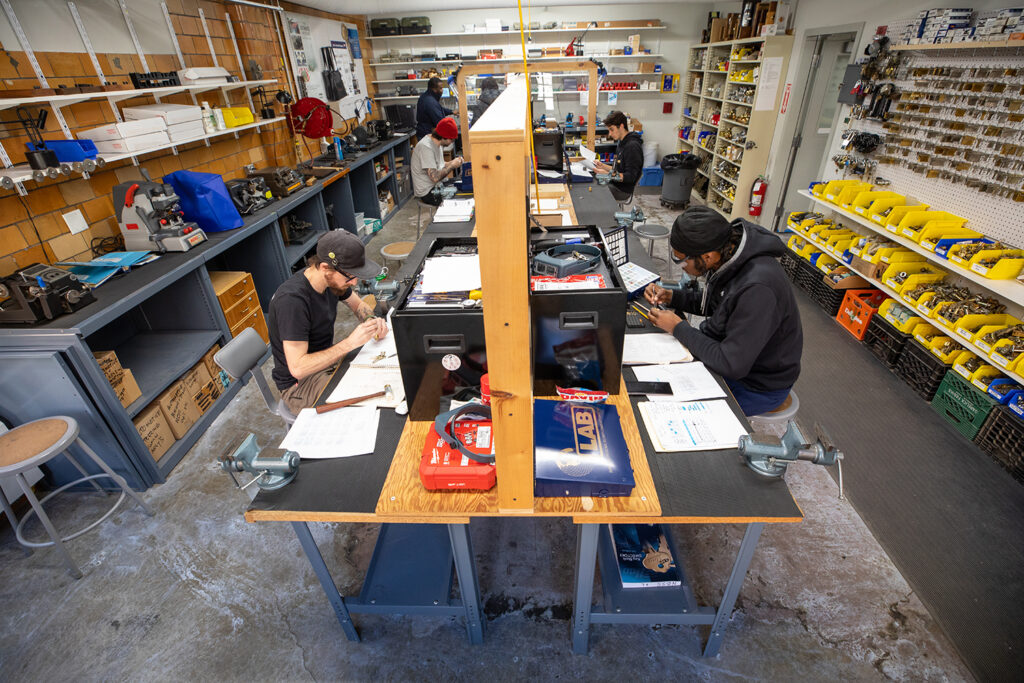

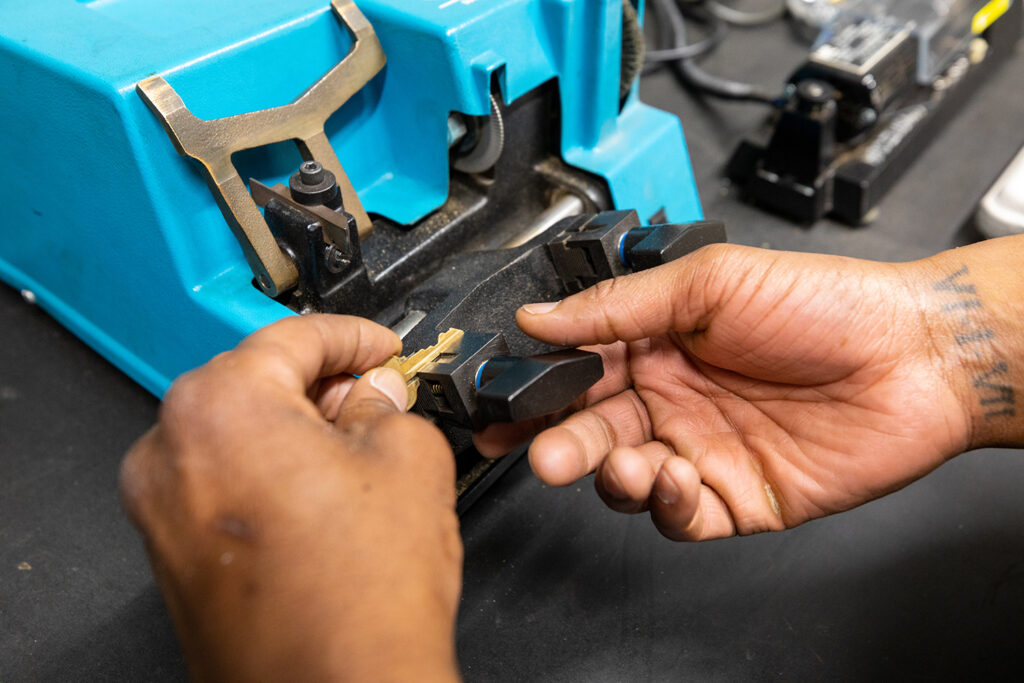


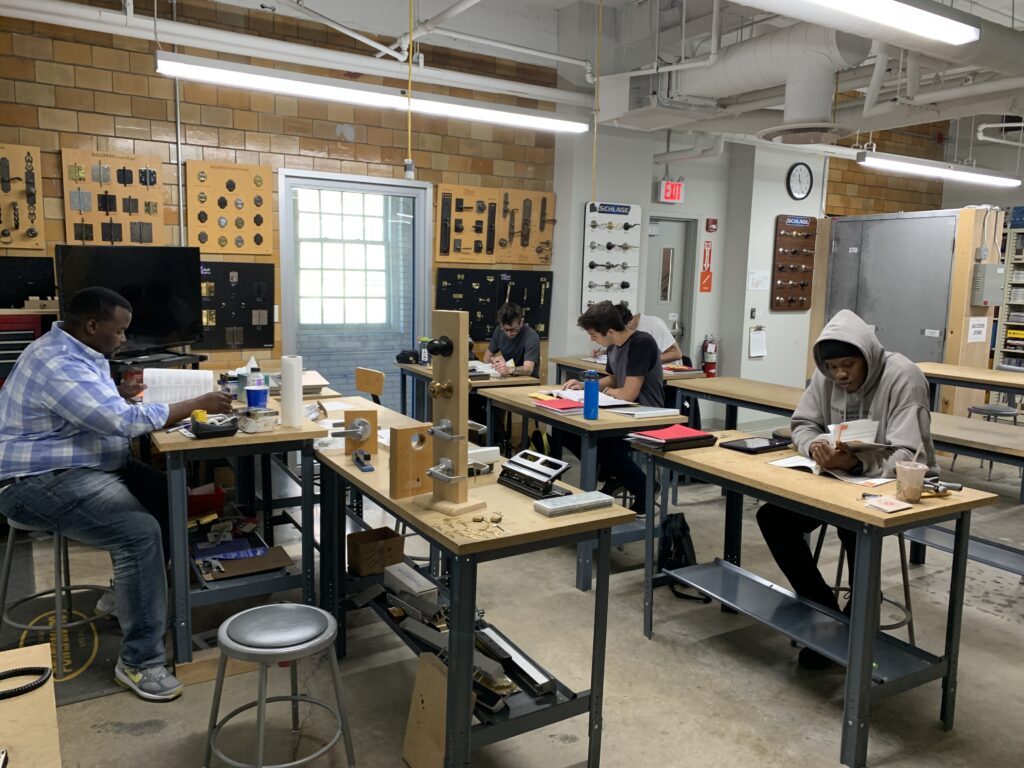
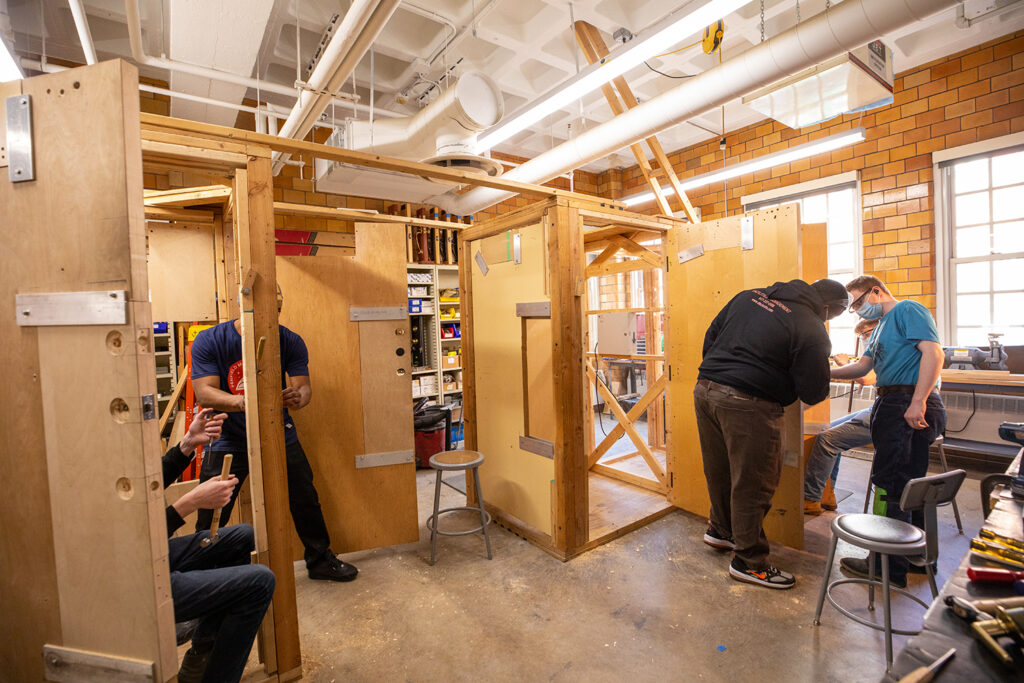
Questions?
Contact Rob O’Dwyer, Director of Admissions, at 617-227-0155 x111 or admissions@nbss.edu.